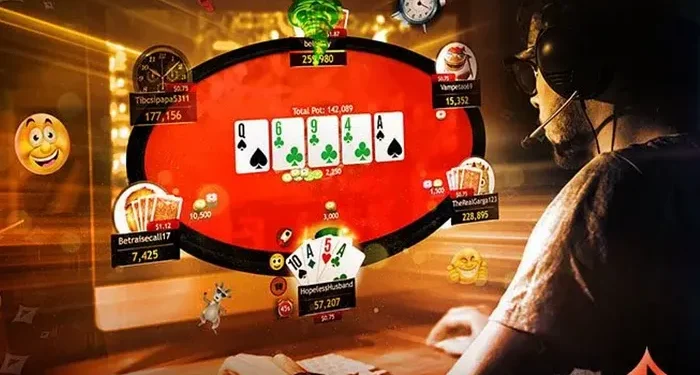In an increasingly digital world, where communication often happens through screens and social connections can feel superficial, non-casino board games stand out as powerful catalysts for genuine human interaction.1 Unlike solitary digital pursuits or high-stakes non uk licenced casinos games, board games create a unique, shared space that actively encourages communication, collaboration, and connection.2
Here’s how non-casino board games excel at enhancing social interaction, making them an unparalleled choice for your next gathering or anywhere else:
1. The Power of Shared Physical Space
The most fundamental way board games enhance social interaction is by bringing people together physically. Players gather around a table, sharing a common focal point (the game board). This immediate proximity naturally fosters:
- Direct Eye Contact: Unlike online interactions, players are looking at each other, not just avatars or text.3 This builds empathy and understanding.
- Non-Verbal Cues: You pick up on smiles, frowns, gestures, and body language – crucial elements of human communication that are often lost in digital spaces.
- Tangible Interaction: Handling game pieces, passing cards, and physically moving components adds a tactile dimension to social engagement.
2. Encouraging Verbal Communication and Dialogue
Most board games inherently require or strongly encourage talking, transforming passive gatherings into lively conversations.4
- Strategic Discussion: In cooperative games like Pandemic or Spirit Island, players must constantly discuss strategies, prioritize threats, and explain their reasoning to achieve a shared goal.5
- Negotiation and Haggling: Games like Catan thrive on player negotiation, where bargaining, persuasion, and playful haggling are key to success.6 This sharpens communication and social finesse.
- Bluffing and Deduction: Social deduction games like The Resistance: Avalon or Werewolf demand intricate communication, careful questioning, and subtle deception, forcing players to read each other and articulate their suspicions.
- Expressing Intent: Even in competitive games, players often explain their moves, offer warnings, or celebrate victories, all of which contribute to ongoing dialogue.7
3. Fostering Collaboration and Teamwork
Many non-casino board games are designed around cooperative play, forcing players to work together towards a common objective.
- Shared Goals: The joy of a collective victory (or the commiseration of a shared defeat) creates powerful bonds. Successfully beating a challenging game together builds a sense of unity and shared accomplishment.
- Role-Playing and Specialization: Games often assign unique roles or abilities, requiring players to understand and leverage each other’s strengths.8 This teaches the value of teamwork and recognizing individual contributions.
- Problem-Solving as a Group: Facing a complex game situation as a team encourages brainstorming, active listening, and combining different perspectives to find optimal solutions.
4. Creating Shared Memories and Inside Jokes
Board games are excellent generators of anecdotes and laughter that linger long after the game is put away.
- Hilarious Moments: Misinterpretations in Telestrations, unexpected turns in Codenames, or a perfectly executed (or horribly failed) strategy often lead to memorable, laugh-out-loud moments.9
- Building a Shared History: Each game night adds to a group’s collective story. The “time Uncle Ahmed tried to build his road across the entire board in Catan” or “when we almost wiped out all the diseases in Pandemic but failed at the last minute” become cherished shared experiences.
- Inside Jokes: Unique game situations or player quirks often spawn inside jokes that strengthen group identity and bonding.10
5. Providing a Low-Pressure Social Framework
For shy individuals or new acquaintances, a board game offers a comfortable structure for interaction.1
- Common Focus: The game itself provides an immediate topic of conversation and a shared activity, reducing the awkwardness of initial small talk.
- Rules as Social Facilitators: The defined rules of a game provide clear boundaries and objectives for interaction, making it easier for people to engage without feeling overwhelmed.
- Equal Participation: Most board games ensure everyone gets a turn and contributes to the gameplay, preventing one person from dominating the conversation.
6. Encouraging Strategic Thinking and Playful Competition
Even competitive games enhance social interaction by providing a structured outlet for rivalry.12
- Good-Natured Rivalry: The competition is typically playful and focused on the game’s mechanics, rather than personal attacks. This allows for healthy competition without damaging relationships.
- Reading Opponents: Observing opponents’ strategies, anticipating their moves, and even bluffing adds layers of social awareness to the game.
- Celebration and Sportsmanship: Learning to win graciously and lose with dignity are invaluable social lessons reinforced through gameplay.13
In a world increasingly driven by digital interfaces, non-casino board games offer a refreshing return to authentic, in-person connection. They are not just games; they are powerful tools for enhancing social interaction, building stronger relationships, and creating a vibrant, engaging atmosphere for friends and family alike, whether you’re gathering in a lively Lahore home or a quiet café.14






